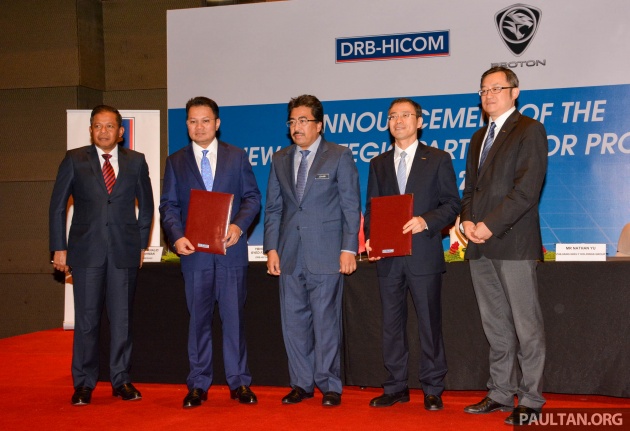During the signing ceremony of the Proton-Geely deal, the national carmaker also took the time to list out what it can offer in the partnership.
Proton said that with its long-established presence in Malaysia, it has an immediate market share in the affordable passenger car segment. The new Saga is a good example of this, and with new products (like an SUV) in the pipeline, this market share could see further improvement.
Geely will also be able to benefit from Proton’s in-house R&D division, which has the capability and technology to develop new models from the ground-up. Proton’s previous ownership of Lotus also brings with it knowledge on lightweight technology and engineering.
An expanded model line-up will also provide the company with an opportunity to expand its production capacity. With enough scale, Geely can capitalise on Proton’s production capabilities to make Malaysia a competitive base for ASEAN, with the option of accessing Middle East and North Africa (MENA) markets.
On the other hand, Proton is seeking to increase its production capacity in line resulting from an immediate volume enhancement, with this partnership. This can come by leveraging on Geely’s network, allowing it to penetrate new markets.
As mentioned earlier, new products will be key to these efforts, and Geely’s technological knowledge should help in this aspect. Backed by its foreign strategic partner’s experience in distribution and aftersales, Proton will want consumers to restore their confidence in the brand.
AD: Drive the Proton model of your dreams. Submit your details and Proton PJ will get in touch with you.
Looking to sell your car? Sell it with Carro.












AI-generated Summary ✨
Comments on the Proton-Geely partnership highlight mixed feelings about its impact on Proton's future, with some optimistic about technological advancements and market expansion, especially in ASEAN, while others express skepticism over management stability and control issues. There is a sense that Proton's ownership structure and political influences create challenges, and some commenters criticize current management for the company's perceived low quality and inefficiency. Several comments emphasize national pride and hope for Proton's revival, along with concerns about cultural differences affecting collaboration. Overall, sentiments range from hopeful anticipation of improved innovation and global presence to frustration over past mismanagement and doubts about the partnership's long-term success. Off-topic politics and race discussions are present but filtered out as less relevant.